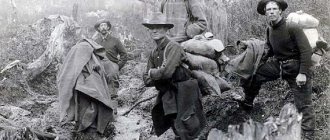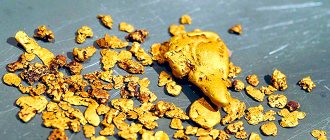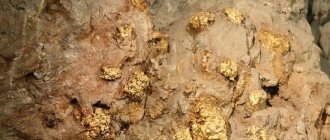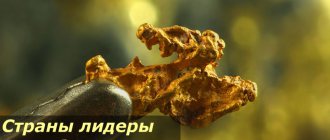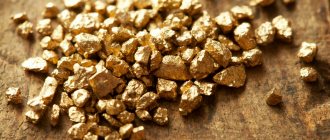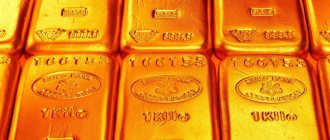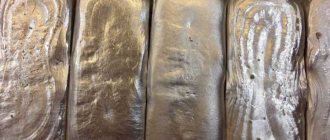The Urals are a rich land, shrouded in secrets and legends, and the minerals that lie in the depths of this area cannot be counted. Due to the complex geological structure and high tectonic activity, a huge amount of rare metals and minerals can be found in this place. The development of mineral resources in the Ural Mountains began several centuries ago.
Even during the time of Peter I, it was valued for its large reserves of precious stones, as well as for its stunning mountain peaks and mystical caves. Now, almost every corner of the mountains is glorified in legends and tales, where people explain the large number of resources that, as if by magic, accumulated in one place. The map of mineral resources of the Urals is replete with multi-colored zones that show huge deposits of precious, ferrous and non-ferrous metals.
Historical reference
The Urals is the place where gold was discovered for the first time in Russia and the first mine started working. Unsuccessful searches for gold had been undertaken before, but only in 1745 Erofei Markov found a strange stone with gold inclusions and went with it to Yekaterinburg. He almost paid with his life for his discovery, since mining engineers did not find the precious metal at the place he indicated and suspected him of lying. However, Lomonosov's student, Ignatius Yudin, discovered particles of gold in the ore and in 1747 the first mine of the Berezovsky mine was founded.
Thus, Russia not only acquired its own gold, but also became the only state in the world where the extraction of precious metals begins not from alluvial deposits, but from ore deposits. However, the mine did not immediately begin to bear tangible fruits - the first data on the mined 16 pounds of gold are dated 1754.
First major finds
Exploration for gold deposits continued and by the end of the 18th century, about 140 gold-bearing veins had been identified and dozens of mines had been built. On one of them, in 1842, the largest Russian nugget was found, called the “Big Triangle,” weighing more than 32 kilograms.
But the real gold rush begins with the discovery of deposits of placer gold, which experienced prospector Lev Brusnitsyn purposefully searched for and found on the banks of the Berezovka River.
Not only did he discover a deposit with an easy and inexpensive manual mining method, but he also developed a soil-washing device known as a borehole, or "American", which was subsequently widely used in the mines of California and Alaska.
Mines of the Urals through the eyes of photographer Mikhail Mishainik
The Urals are an incredibly beautiful geographical region of Russia, known throughout the world for its amazing mountain system, stretching from the Kara Sea to the Caspian Sea, and called the Ural Range.
Many also know that the Urals are not only beautiful nature, but also the largest metallurgical base of our country and the oldest mining region of the Russian state. Genuine interest and industrial development, which actively began to be carried out during the time of Peter I.
Since then, an incredible number of mining deposits have been developed throughout the Urals, as a result of which a large number of mining workings, quarries, shafts, adits and mines have remained. Available to this day for a small and very limited circle of people who want to understand the history of the industrialization of the industrial Urals.
Mikhail Mishainik
One of these people is Mikhail Mishainik, a photographer, local historian, traveler, speleostologist and founder of the Mines of the Urals project.
The project “Mines of the Urals” is a community of like-minded people that brings together people who are keen on tourism and engaged in the study of active and abandoned mining workings, quarries, mines, adits and pits. As a result of extensive research and incredibly dangerous work carried out by a group of people, everyone is given the opportunity to get acquainted with the history of numerous mines and quarries of the Urals.
Mikhail, hello! Thank you for your interest and for the offer to share with our readers the history of your project “Mines of the Urals”. The research work you are doing is undoubtedly very interesting and, of course, important for familiarizing the residents of your native land and the entire country with the history of the industrial Urals. Are you ready to chat with us and give an interview for our readers about your hobby and the project “Mines of the Urals”?
Greetings! Yes, I am open to dialogue.
Please tell us how the idea came to visit and study old mines, adits, mines and quarries? How did it all start and what was the initial impetus for such a dangerous hobby?
I have been interested in mining since childhood. I have always been attracted by the mystery of underground corridors, winding networks of rail roads, sparkling crystals of minerals. Back in my school years, I found an old pit in the forest, which I deepened and mined for rock crystal crystals.
How long have you been studying old mine workings? How many people do you have in the Ural Mines team?
I began to become seriously interested in the history of mining in 2008, when I first visited the Staraya Lensa quarry.
At various times, our team consisted of up to 5 people, at the moment - 2 people.
How do you find out about new abandoned properties? Where do you get information about them?
All information about developments was covered in one way or another in various literary publications. Scientific literature is my main source of information. When searching for information, you have to work with both pre-revolutionary sources and modern ones.
How many abandoned mountain sites have you already visited and explored? According to your own assumption, how many more abandoned mining sites, mines, quarries, adits, pits, etc. remain unexplored and unexplored in the Urals?
I did not count the exact number of workings visited, but according to rough estimates, there are about five hundred.
Thousands of old mines are scattered throughout the Urals, each of which has its own history and is waiting for its researchers.
Are there any objects that are more memorable than others? Which of the objects you studied were the most dangerous? Which ones are the most interesting?
One of the memorable ones was the descent into the abandoned “Golden Mountain” mine of mine No. 9 in Karabash. The workings of this mine have been preserved almost in their original form. Of the operating mines, the most striking impressions were made by the Malyshevsky emerald mine and the salt mines of Sol-Iletsk.
Do you visit and explore only abandoned mining industrial sites, or, it turns out, visit and study existing industrial enterprises in the Urals? If so, can you list where you have already been and at which existing enterprises?
Of course, the Urals are still the country’s most important raw material base. Some large deposits are still being developed and have a long history of their development. This is the history of our region, the formation of industry in the Urals, and it should not be forgotten. At the moment, we have an extensive portfolio and mining companies are willing to cooperate with us. Of those visited, the most significant can be identified: the Iletsk salt mine, the Malyshevsky mine, the Berezovsky mine, the mines of the Vysokogorsky GOK and others.
In order to safely descend into deep mines, pits and adits, it is necessary to use professional rock climbing equipment and equipment. Please tell us what equipment and equipment you use? What should be a must-have on your trip and what can’t be done without on more than one trip underground?
To descend into abandoned mines, we use Petzl climbing equipment - safety systems, rappelling and belay devices, jumars, carabiners, ropes. We use rubberized clothing to protect against water and dirt.
Of the mandatory attributes, you can put a helmet and a flashlight in first place. Additionally, we use self-rescuers and an aspirator.
Were the old abandoned mine workings that you visited closed and protected sites? Was it necessary to obtain special permits and passes to study them? Or is all this necessary only for existing enterprises?
Almost all exhausted workings are deliberately filled up or closed with blind lintels, so there is no point in maintaining and protecting them.
To visit active workings, of course, you need permission from management.
Have you ever had any extreme situations while descending into abandoned mines underground? How dangerous is it to organize and participate in trips like yours to abandoned mines, adits and quarries? Do you know of cases of similar expeditions that ended fatally for the researchers?
The descent itself is an extreme situation. There were several unpleasant situations, but I don’t want to remember them.
Visiting any workings requires extreme caution, attentiveness and a sober assessment of your actions.
I only know of a tragic incident in the Perm region, when a person died from gas poisoning in an abandoned coal mine.
When you go on a new journey underground, do you always know what was previously mined there, the history of the object and who it belonged to? How old is this object? What is its security level? Is there increased radiation? Gases? Are there any chances of collapse or destruction?
Before visiting any object, information about it is carefully studied. This is important to understand the degree of its availability and safety. Dangerous gases accumulate in poorly ventilated mines and in the presence of rotting wood. It is better to avoid such developments. Landfalls are likely in areas of weak or destroyed rocks, so it is better to avoid visiting such workings.
When you go underground, does anyone on the team stay above to ensure your safety? Do you use specialized means of radio communication (walkie-talkies) with each other? When setting out on your next journey underground, do you warn the Ministry of Emergency Situations and rescue services about your descent?
A person remains on the surface only in case of exploration of any workings. In this case, communication is maintained using radio stations.
Before the descent, the coordinates of the place and the control time are communicated to close relatives.
Can your travels involve outsiders who are unprepared and have not previously had similar experience of descending into extreme underground objects? That is, you can book a tour of the underground kingdom of the industrial Urals? If so, how is the safety of the new person on the team ensured?
There are workings that do not require special skills or any specific abilities to visit them. Excursions to such mines are possible through a travel agency that provides insurance.
Do you have any plans for the future to go to new yet unexplored underground sites? If so, what are these places and where? Now, at this moment, is there any new journey planned underground?
We have huge plans. In addition to describing the small deposits of former mining dachas, it is necessary to complete a series of publications on the famous deposits of the Urals, to explore the workings of the Northern Urals, perhaps even the Subpolar. There are also thoughts about visiting and photographing objects outside the Urals.
We are not planning any expeditions in the near future.
What are your recommendations for novice explorers of the Ural underground?
It would be wrong for me to give recommendations on visiting abandoned mine workings, because... they are particularly dangerous objects and visiting them is never encouraged. I would recommend starting with visiting the caves.
An underground life hack from Mikhail Mishainik, or can you add something of your own if this topic was not touched upon in the questions?
Always wear a hard hat and take two flashlights.
Thank you Mikhail for taking the time to chat and sincerely answering all our questions. We wish you a speedy completion of the series of publications on the famous deposits of the Urals, and begin research into the oldest and not yet studied workings of the Northern and Subpolar Urals. Best regards, Travel.com
Interview: Pavel Taskaev
Photo: Mikhail Mishainik (https://vk.com/mishainik)
What minerals are there in the Urals?
Truly, the list of treasures with which the Ural Mountains are rich is amazing. In addition to the richest deposits of gold, silver, copper, platinum, aluminum, and ferrous metals are mined in the Urals.
The region is rich in precious stones: diamonds, emeralds, amethysts, topazes. Deposits of semi-precious (ornamental) stones are found everywhere – malachite, jasper, marble, alexandrite, and chrysolite.
There are deposits of oil, gas and coal. In the Urals there is the world's largest deposit of refractory materials - talc, asbestos, dolomite, magnesite.
Main deposits of Ural gold
About 70% of the developed mines are concentrated in three regions - Sverdlovsk, Chelyabinsk and Tyumen. A smaller part is located in Bashkortostan, the Orenburg region, as well as in the Volga and Northwestern districts.
The deposits are dominated by their own gold ore and complex deposits. The share of placers is relatively small - no more than 17%.
The largest amount of precious metal is mined in the Sverdlovsk region. Up to 75% of mines are placers. The rest are their own fields and complex deposits.
The Chelyabinsk region is rich mainly in ore deposits. Their share of the gross volume of gold mining is 71%.
In Bashkiria, which is in third place, a third of all Ural gold is mined, and 97% of the deposits are complex. The main reserves are copper pyrite ores.
Indigenous
Among the primary deposits it should be noted:
- Berezovskoe;
- Kochkarskoe;
- Vorontsovskoe;
- Svetlinskoe;
- Bereznyakovskoe.
Placers
The most promising placer mines:
- Severo-Svetlinsky;
- Kazansky;
- Suleimenevskaya placer;
- Staro-Marininskaya placer.
Field map
If you look at the map, it becomes obvious that, in larger or smaller quantities, gold is found throughout the entire territory of the Ural Range. This is due to the peculiarities of the formation of mountains - they were formed at the site of the collision of two tectonic plates.
The lava masses that came to the surface contained a significant amount of gold. They are the main source of all precious metal reserves in this region.
"Rusal"
The Severouralsk bauxite mine (SUBR, Sverdlovsk region), part of Rusal, is a leading enterprise for the extraction of bauxite, a raw material for aluminum smelting, supplied to alumina and aluminum plants. The mines of Severouralsk account for more than 70% of the bauxite mined in Russia. The mine's capacity is 3 million tons of bauxite per year. In 2015, RUSAL commissioned the first start-up complex of the Cheremukhovskaya-Glubokaya mine. The new mine is among the five deepest mines in the world. In 2021, the second, and in 2021, the third launch complex was put into operation, completing the construction of surface facilities at the industrial site. Currently, underground construction is underway at the Cheremukhovskaya-Glubokaya mine at a depth of over 1.4 km.
By whom and how is it mined?
The ore method of gold mining is the most expensive, so large companies are developing such mines in the Urals. At placers, after the bulk of the gold-bearing soil has been mined, the noble metal still remains. It is not profitable to mine it industrially, but it is possible to use the labor of miners who, using artisanal methods, process dumps and placers on the territory of large gold mining enterprises.
Gold mining companies
In the Chelyabinsk region, deposit development is carried out by JSC Yuzhuralzoloto. The company accounts for 95% of all gold mining in the region.
The main gold mining companies in the Sverdlovsk region:
- Berezovskoe Mining Management LLC;
- CJSC "Gold of the Northern Urals";
- JSC "Gagarka-Au-PV";
- CJSC "Maminsk Mining Company";
- JSC "Degtyarskoye Mining Administration"
In Bashkiria, the development of placers is carried out by CJSC Artel Prospectors Zolotaya Dolina and LLC Geotekhnologiya. Ore mining methods are used by:
- OJSC "Uchalinsky GOK";
- LLC "Bashkir copper"
- OJSC Sibay Mining and Processing Plant;
- CJSC "Buribaevsky GOK";
- OJSC "Bashkir Mining Directorate"
Extraction methods
Extraction of precious metals in the Urals is carried out by quarry and mine methods; the extraction of precious metal occurs mainly by heap leaching of gold-bearing rock.
Production volumes
The share of Ural metal in the country's gold mining is 5% - over 20 tons annually. The region is in third place in terms of the amount of precious metal mined. By region, the approximate picture is as follows:
- Sverdlovsk region - 11 tons;
- Chelyabinsk - 5 tons;
- Bashkortostan - 2.5 tons;
- Orenburg region - 2 tons.
Is it possible to mine gold in Russia?
Anyone can mine gold in Russia and the Urals. In order to search for precious metal yourself, it is necessary to draw up a contract agreement with a gold mining organization, which gives the contractor the right to carry out searches on the sites of this organization. Otherwise, the activity will be illegal and may result in both administrative and criminal penalties.
At the moment, a law on free gold mining by individuals who have registered individual entrepreneur status is being prepared for adoption, but its effect will only apply to the Magadan region, and the list of acceptable equipment is limited to a washing tray.
What do they do with mined gold?
The only possible option to sell gold legally is to contact a company with which a contractual relationship has been established, but the price is unlikely to be competitive. There is hope that, along with the law on free mining, they will also develop a clear mechanism for the state to accept metal from miners.
Recommendations for working with a metal detector
A metal detector greatly facilitates the search for gold and reduces the time spent washing waste rock. For those who have decided where to look for nuggets using this device, I recommend choosing a device with pulsed high-frequency radiation. The market offers a huge number of expensive professional models and budget options that are suitable for beginners.
A metal detector determines the presence of gold in a given area, after which the soil is mined using a mini dredge.
Search in waste placers
Since modern gold extraction methods are not 100% efficient, washing waste soil can give good results. If you're lucky, you'll find a large nugget. When washing the soil, there is a high probability that large nuggets will get into the waste rock: due to their large size, they do not settle in the small cells of the dredge and can be washed away by high water pressure.
Search in new areas
The most promising will be the search for alluvial deposits. Most often, gold is found in rivers, old river beds, on mountain slopes, and at places where rock masses moved during the Ice Age.
There is a high probability of finding a precious metal anywhere, especially if there is rock of volcanic origin, granitoids, or quartz veins nearby.
Tashkisyu River area
Along the Tashkisyu River near the village of Muldakai, 20 km south of the city of Miass, in 1933 several flat, completely unrounded nuggets were found. The largest of them, weighing 425 g with sharply jagged edges, was located in a flowing swamp, in bluish viscous clay overlying crushed shale. Below the swamp, small gold began to be found along with nuggets. In the area where nuggets are distributed there is a tectonic contact between chromium-bearing serpentines and porphrites, and to the west of the contact there are shales.
Judging by the shape, the nuggets most likely should be associated with the contact shear zone, since the quartz veins located nearby are not gold-bearing. The largest nugget found in the area is a bent plate, smoothed on the convex side and lumpy on the concave side, with a clearly crystalline structure. Since the nugget was located with the convex side up, it was obviously polished by a sandy-clayey water flow rushing through it.

